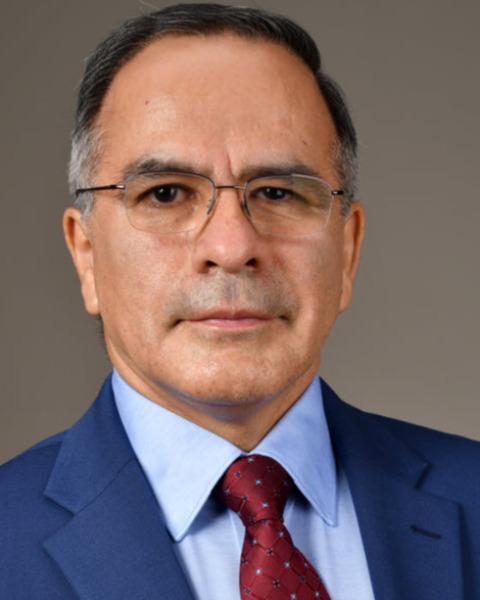Poster Session 3
(760) Perioperative Risk Factors for Amniotic Band Sequence Following Fetoscopic Laser Photocoagulation for Twin-Twin Transfusion Syndrome

Felicia V. LeMoine, MD (she/her/hers)
Fetal Intervention Fellow
Division of Fetal Intervention, Department of Obstetrics, Gynecology and Reproductive Sciences, McGovern Medical School at UTHealth Houston
Houston, Texas, United States
Sami Backley, MD
Clinical Fellow PGY 9
Division of Fetal Intervention, Department of Obstetrics, Gynecology and Reproductive Sciences, McGovern Medical School at UTHealth Houston
Houston, Texas, United States- GV
Gustavo Vilchez, MD, MSCR
UTHealth Houston
Houston, Texas, United States 
Jimmy Espinoza, MD, MSc
Professor
Division of Fetal Intervention, Department of Obstetrics, Gynecology and Reproductive Sciences, McGovern Medical School at UTHealth Houston
Houston, Texas, United States.jpg)
Anthony Johnson, DO
Professor
McGovern Medical School University of Texas Health Science Center at Houston (UThealth)
Houston, Texas, United States
Ramesha Papanna, MD, MPH
Professor
McGovern Medical School at UTHealth Houston
Houston, Texas, United States
Eric P. Bergh, MD
Associate Professor
Nemours Children's Health
Wilmington, Delaware, United States
Submitting Author and Presenting Author(s)
Coauthor(s)
Observational studies have suggested associations between perioperative characteristics such as gestational age (GA) at fetoscopic laser photocoagulation FLP, chorioamnion separation (CAS), and iatrogenic septostomy (IS) and amniotic band sequence (ABS) after FLP for twin-twin transfusion syndrome (TTTS). We aim to evaluate the relationship between perioperative factors and ABS in monochorionic, diamniotic (MCDA) twins undergoing FLP for TTTS treatment.
Study Design:
A secondary analysis of a prospective cohort study involving 816 cases of FLP (2011-2024) was conducted. Detailed ultrasound evaluation before FLP showed absence of ABS for all cases. ABS was either identified by post-FLP imaging and confirmed postnatally or identified on postnatal exam. Perioperative factors were compared using t-test, χ2 test, and Fisher’s exact test, where applicable. Multivariate logistic regression was performed to adjust for the following covariates: intertwin discordance, GA at FLP, CAS diagnosed on post-op day 1 scan, amnioinfusion, and trocar size.
Results:
11 cases (1.3%) were complicated by ABS. Prenatal suspicion of ABS prompted prenatal lysis without amputation in 3/11 cases (27.3%; Table 1). Digital amputation occurred in 3/11 cases (27.3%). There was no difference in maternal characteristics. Significant differences in intertwin weight discordance prior to FLP (12.9% ± 8.7% versus 23.2% ± 13%, p < 0.05), GA at FLP (17.9 ± 1.1 weeks versus 20.6 ± 2.8 weeks, p < 0.05), CAS (63.6% (7/11) versus 10.6% (85/805), p < 0.05), and trocar size (p = 0.04) were demonstrated between cases with and without ABS (Table 2). Amnioinfusion (aOR 0.17, 95% CI 0.02-0.76, p =0.04), smaller intertwin weight discordance (aOR 0.90, 95% 0.83-0.96), and earlier GA at FLP (aOR 0.56, 95% CI 0.34-0.82) decreased the risk of ABS. Conversely, CAS increased the risk of ABS (aOR 11.90, 95% CI 3.15-52.30, p < 0.05).
Conclusion:
ABS is a rare complication post-FLP for TTTS, yet, is associated with significant neonatal sequelae. Perioperative factors, particularly CAS, should prompt detailed post-FLP evaluation for development of ABS.

